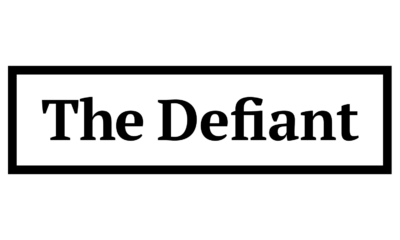News
Qu’est-ce que la CBDC et comment peut-elle lutter contre le blanchiment d’argent

La transparence des CBDC pourrait-elle suivre et freiner efficacement les 3 000 milliards de dollars de flux financiers illicites ? Découvrons-le.
Le monde est confronté à un défi de taille : les fonds illicites et le blanchiment d’argent. En 2023, plus de 3 000 milliards de dollars illicitement ont transité par le système financier mondial, selon un rapport de Verafin, société de technologie de lutte contre la criminalité financière appartenant au Nasdaq.
Cela inclut des activités telles que le trafic de drogue, la traite des êtres humains, le financement du terrorisme, les escroqueries et les stratagèmes de fraude bancaire, qui représentent collectivement des milliards de pertes mondiales.
Pour relever ces défis, les banques centrales du monde entier explorent les monnaies numériques des banques centrales (CBDC). Depuis mai 2020, le nombre de pays considérant Les CBDC sont passées de 35 à 134 pays et unions monétaires, représentant 98 % du PIB mondial.
Parmi eux, 68 pays sont à des stades avancés d’exploration, y compris le développement, le projet pilote ou le lancement, avec 19 pays du G20 à des stades avancés et onze déjà en phase pilote.
Cependant, les progrès en matière de CBDC de détail sont au point mort aux États-Unis, créant un fossé entre les États-Unis et les autres banques du G7. En revanche, la Banque centrale européenne (BCE) se prépare à l’euro numérique, en effectuant des tests pratiques avec des transactions réglées dans un environnement contrôlé.
Les partisans soutiennent que les CBDC pourraient offrir une transparence sans précédent, perturbant potentiellement les flux financiers illicites qui affligent notre monde.
Les critiques craignent cependant que traçabilité des CBDC pourrait conduire les activités illicites plus profondément sous terre, hors de portée des systèmes bancaires formels.
Malgré cela, la capacité des CBDC à freiner les flux financiers illégaux reste un domaine clé d’exploration et de débat. Les CBDC pourraient-elles être la solution tant attendue au fléau de l’argent noir et du blanchiment d’argent ? Découvrons-le.
Comment les CBDC peuvent-elles résoudre les problèmes d’argent illicite ?
Les CBDC offrent une solution prometteuse pour lutter contre le blanchiment d’argent en raison de leur nature numérique et de la technologie blockchain sous-jacente. Voici plusieurs façons dont les CBDC peuvent théoriquement répondre aux problèmes de blanchiment d’argent :
- Transparence et traçabilité : Les transactions CBDC sont enregistrées sur un chaîne de blocs, fournissant un registre immuable et transparent de toutes les transactions. Cette transparence peut aider les autorités à suivre les flux de fonds et à identifier les activités suspectes plus efficacement que les transactions en espèces traditionnelles.
- Surveillance automatisée : Les systèmes CBDC peuvent intégrer des outils automatisés de surveillance des transactions alimentés par l’intelligence artificielle (IA) et des algorithmes d’apprentissage automatique. Ces outils peuvent analyser les modèles de transactions en temps réel, signalant les activités potentiellement suspectes pour une enquête plus approfondie.
- Vigilance renforcée: Les CBDC peuvent faciliter l’amélioration des processus de diligence raisonnable en fournissant des informations plus détaillées sur les transactions. Cela peut aider les institutions financières et les régulateurs à mieux comprendre la source des fonds et les parties impliquées dans les transactions.
- Collaboration mondiale : Les CBDC peuvent promouvoir une collaboration mondiale dans la lutte contre le blanchiment d’argent en permettant des transactions transfrontalières transparentes. Cela peut faciliter le partage d’informations et améliorer l’efficacité des efforts internationaux de lutte contre le blanchiment d’argent (AML).
- Conformité réglementaire : Les CBDC peuvent rationaliser la conformité réglementaire en intégrant les réglementations AML dans leur conception. Cela peut garantir que les transactions CBDC sont conformes dès le départ aux lois et réglementations AML.
Principaux cas d’utilisation des CBDC
Les CBDC offrent une gamme d’applications prometteuses dans divers secteurs. Voici les principaux cas d’utilisation :
- Paiements nationaux : Les CBDC offrent une alternative numérique à l’argent physique, permettant des transactions électroniques au sein d’un pays, améliorant ainsi la commodité et l’efficacité tout en réduisant la dépendance aux systèmes bancaires traditionnels.
- Paiements transfrontaliers : Les CBDC rationalisent les transactions transfrontalières, les rendant plus rapides, moins chères et plus transparentes par rapport aux méthodes traditionnelles, au profit des entreprises, des particuliers et des économies.
- Remises de fonds : Les CBDC offrent aux expatriés un moyen rentable et efficace d’envoyer de l’argent chez eux, réduisant ainsi les frais et les délais de traitement associés aux canaux de transfert de fonds traditionnels.
- L’inclusion financière: Les CBDC comblent le fossé entre les populations non bancarisées ou sous-bancarisées et les services financiers formels, permettant aux individus de participer à l’économie formelle.
- Prestations et subventions gouvernementales : Les CBDC permettent aux gouvernements de distribuer des prestations sociales et des subventions directement dans les portefeuilles numériques des citoyens, améliorant ainsi la transparence et réduisant les coûts administratifs.
- Commerce électronique: Les CBDC facilitent les paiements en ligne transparents, offrant aux commerçants et aux consommateurs un mode de paiement sécurisé, peu coûteux et efficace, stimulant ainsi la croissance du commerce électronique.
Le bac à sable récent expériences menées par Swift et 38 institutions mondiales ont montré le potentiel des CBDC dans divers scénarios complexes.
Ces expériences ont illustré l’interopérabilité entre différents réseaux numériques, l’automatisation des paiements commerciaux via des contrats intelligents et la facilitation de la livraison atomique contre paiement (DvP) sur plusieurs réseaux d’actifs et de liquidités.
Les expériences ont montré comment les CBDC pouvaient simplifier les flux commerciaux, stimuler la croissance des marchés de valeurs symboliques et permettre un règlement efficace des devises.
Surtout, ils ont montré que les institutions financières peuvent obtenir ces avantages tout en tirant parti de leur infrastructure existante.
Les participants des banques centrales, des banques commerciales et des fournisseurs d’infrastructures de marché ont souligné l’importance des réseaux interopérables dans l’écosystème des CBDC pour éviter la fragmentation et garantir des transactions sans friction.
Cet effort de collaboration marque un pas de géant vers la réalisation du potentiel des CBDC et d’autres monnaies numériques, ouvrant la voie à une économie numérique plus efficace, inclusive et interconnectée.
La cryptographie est-elle un méchant majeur et la CBDC pourrait-elle aider ?
Dans une interview avec Crypto.News, Hubert Krawczyk, responsable du développement chez basedVC, et Mykola Demchuk, avocat et responsable du conseil en conformité chez AMLBot, ont partagé leurs opinions sur le potentiel des CBDC dans la lutte contre l’argent noir et le blanchiment d’argent.
Interrogé sur l’idée fausse selon laquelle les crypto-monnaies favorisent le blanchiment d’argent et sur la question de savoir si les CBDC pourraient offrir une solution, Krawczyk a expliqué que l’association entre crypto-monnaie et blanchiment d’argent est erronée. Il a comparé la possession de crypto à la possession d’une arme à feu, soulignant que c’est l’utilisation qui détermine le résultat :
« La cryptographie peut être associée à la promotion du blanchiment d’argent, mais il s’agit d’une idée fausse courante. La crypto ne favorise rien d’autre que la possession de vos propres actifs sans dépendre d’un tiers.
Krawczyk a également souligné la similitude des technologies de grand livre entre les CBDC et les crypto-monnaies, soulignant que les deux facilitent le suivi des fonds. Cependant, il a souligné une différence cruciale :
« La principale différence entre la CBDC et la cryptographie réside dans la capacité du gouvernement à saisir les fonds et à contrôler l’offre. Ceci, combiné à la diminution de l’utilisation des espèces à l’échelle mondiale, conduit à des schémas potentiellement dangereux, comme on le voit dans les pays dotés de scores de crédit social.
Parallèlement, Demchuk a abordé l’idée fausse selon laquelle les crypto-monnaies sont souvent utilisées pour le blanchiment d’argent, soulignant que les monnaies fiduciaires sont principalement utilisées pour des activités illicites. Il a souligné :
« Pour commencer, il existe une compréhension trompeuse parmi les gens selon laquelle la cryptographie est souvent utilisée pour le blanchiment d’argent… Le montant annuel estimé d’argent blanchi est d’environ 800 milliards de dollars, tandis que les analyses de blockchain n’indiquent qu’environ 24 milliards de dollars liés à des adresses illicites sur diverses blockchains… Par conséquent, l’affirmation selon laquelle la cryptographie est souvent utilisée pour le blanchiment d’argent n’est pas correcte.
Demchuk a souligné que l’adoption des CBDC pourrait être une solution pour réduire les systèmes de blanchiment d’argent, en particulier si les utilisateurs doivent créer un compte auprès d’une banque centrale. Cela faciliterait grandement le suivi et l’arrêt des mouvements illicites des CBDC.
Il expliqua:
« L’une des raisons pour lesquelles la CBDC pourrait être une solution est que les transactions CBDC pourraient être suivies à l’aide de la blockchain… L’autre raison est que les transactions CBDC peuvent dans certains cas être interceptées par une banque centrale, être arrêtées et/ou les fonds être confisqués. Par conséquent, toutes ces fonctionnalités rendront très peu attrayante pour les criminels l’utilisation de CBDC pour le blanchiment d’argent.
Cependant, il a noté que si les CBDC offrent un bon anonymat, elles pourraient être utilisées au même niveau que la cryptographie pour des activités illicites.
En un mot, les deux experts ont convenu que même si les CBDC offrent un certain potentiel dans la lutte contre l’argent noir et le blanchiment d’argent, une mise en œuvre et une réglementation appropriées sont essentielles.
Équilibrer les avantages et les risques des CBDC
Si les monnaies numériques des banques centrales (CBDC) offrent des solutions prometteuses pour lutter contre le blanchiment d’argent, les deux experts ont souligné les inconvénients et les risques potentiels associés à leur mise en œuvre. Demchuk a mentionné que même si les CBDC pourraient potentiellement réduire les programmes de blanchiment d’argent, il existe des préoccupations concernant la confidentialité :
“L’une des plus grandes préoccupations de la CBDC est la confidentialité, car la banque centrale disposerait de données sur chaque transaction et même de certaines données sur les utilisateurs.”
Il a averti que dans les pays confrontés à des problèmes tels que la corruption et un État de droit faible, une collecte de données approfondie pourrait entraîner des défis supplémentaires pour les entreprises et les particuliers.
Krawczyk a fait écho à ces préoccupations, soulignant que les CBDC pourraient permettre une surveillance gouvernementale étendue. Il a averti qu’une telle surveillance pourrait conduire à une utilisation abusive des données financières à des fins de contrôle politique ou social :
“Avec les CBDC, un système centralisé surveillerait chaque transaction, emplacement et divers autres indicateurs de performance clés.”
Dans le même temps, les deux experts ont mentionné la cybersécurité comme un risque majeur associé aux CBDC. Demchuk a évoqué le potentiel de cyberattaques, qui pourraient menacer la stabilité monétaire et financière :
« La possibilité que le système soit piraté et exploité par des criminels qui développent de nouvelles méthodes menacerait la stabilité monétaire et financière. »
Krawczyk a également souligné le risque de fuite de données des systèmes gouvernementaux et a exprimé ses inquiétudes quant à la centralisation des systèmes financiers, qui pourrait avoir un impact sur le commerce et la finance mondiale :
« Si ce ne sont pas les banques qui stockent notre argent aujourd’hui, que se passera-t-il si les infrastructures gouvernementales deviennent la cible d’acteurs malveillants comme les terroristes ? Cela pourrait paralyser des pays entiers et avoir un impact sur le commerce mondial.
Demchuk a souligné que si les CBDC offrent des avantages potentiels, tels que l’inclusion financière, elles soulèvent également des préoccupations concernant la confidentialité et la sécurité des données.
Ces risques suggèrent la nécessité d’une réglementation appropriée et de mesures de cybersécurité pour garantir la mise en œuvre sûre et sécurisée des CBDC.
News
Bitcoin soars above $63,000 as money flows into new US investment products

Bitcoin has surpassed the $63,000 mark for the first time since November 2021. (Chesnot via Getty Images)
Bitcoin has broken above the $63,000 (£49,745) mark for the first time since November 2021, when the digital asset hit its all-time high of over $68,000.
Over the past 24 hours, the value of the largest digital asset by market capitalization has increased by more than 8% to trade at $63,108, at the time of writing.
Learn more: Live Cryptocurrency Prices
The price appreciation was fueled by record inflows into several U.S.-based bitcoin cash exchange-traded funds (ETFs), which were approved in January this year.
A Bitcoin spot ETF is a financial product that investors believe will pave the way for an influx of traditional capital into the cryptocurrency market. Currently, indications are favorable, with fund managers such as BlackRock (BLK) and Franklin Templeton (BEN), after allocating a record $673 million into spot Bitcoin ETFs on Wednesday.
Learn more: Bitcoin’s Success With SEC Fuels Expectations for an Ether Spot ETF
The record allocation surpassed the funds’ first day of launch, when inflows totaled $655 million. BlackRock’s iShares Bitcoin Trust ETF (I BITE) alone attracted a record $612 million yesterday.
Bitcoin Price Prediction
Earlier this week, veteran investor Peter Brandt said that bitcoin could peak at $200,000 by September 2025. “With the push above the upper boundary of the 15-month channel, the target for the current market bull cycle, which is expected to end in August/September 2025, is raised from $120,000 to $200,000,” Brandt said. published on X.
The influx of capital from the traditional financial sphere into Bitcoin spot ETFs is acting as a major price catalyst for the digital asset, but it is not the only one. The consensus among analysts is that the upcoming “bitcoin halving” could continue to drive flows into the bitcoin market.
The Bitcoin halving is an event that occurs roughly every four years and is expected to happen again next April. The halving will reduce the bitcoin reward that miners receive for validating blocks on the blockchain from 6.25 BTC to 3.125 BTC. This could lead to a supply crunch for the digital asset, which could lead to price appreciation.
The story continues
Watch: Bitcoin ETFs set to attract funds from US pension plans, says Standard Chartered analyst | Future Focus
Download the Yahoo Finance app, available for Apple And Android.
News
FRA Strengthens Cryptocurrency Practice with New Director Thomas Hyun

Forensic Risk Alliance (FRA), an independent consultancy specializing in regulatory investigations, compliance and litigation, has welcomed U.S.-based cryptocurrency specialist Thomas Hyun as a director of the firm’s global cryptocurrency investigations and compliance practice. Hyun brings to the firm years of experience building and leading anti-money laundering (AML) compliance programs, including emerging payment technologies in the blockchain and digital asset ecosystem.
Hyun has nearly 15 years of experience as a compliance officer. Prior to joining FRA, he served as Director of AML and Blockchain Strategy at PayPal for four years. He established PayPal’s financial crime policy and control framework for its cryptocurrency-related products, including PayPal’s first consumer-facing cryptocurrency offering on PayPal and Venmo, as well as PayPal’s branded stablecoin.
At PayPal, Hyun oversaw the second-line AML program for the cryptocurrency business. His responsibilities included drafting financial crime policies supporting the cryptocurrency business, establishing governance and escalation processes for high-risk partners, providing credible challenge and oversight of front-line program areas, and reporting to the Board and associated authorized committees on program performance.
Prior to joining PayPal, Hyun served as Chief Compliance Officer and Bank Secrecy Officer (BSA) at Paxos, a global blockchain infrastructure company. At Paxos, he was responsible for implementing the compliance program, including anti-money laundering and sanctions, around the company’s digital asset exchange and its asset-backed tokens and stablecoins. He also supported the company’s regulatory engagement efforts, securing regulatory approvals, supporting regulatory reviews, and ensuring compliance with relevant digital asset requirements and guidelines.
Thomas brings additional experience in payments and financial crime compliance (FCC), having previously served as Vice President of Compliance at Mastercard, where he was responsible for compliance for its consumer products portfolio. He also spent more than seven years in EY’s forensics practice, working on various FCC investigations for U.S. and foreign financial institutions.
Hyun is a Certified Anti-Money Laundering Specialist (CAMS) and a Certified Fraud Examiner (CFE). He is a graduate of New York University’s Stern School of Business, where he earned a bachelor’s degree in finance and accounting. Additionally, he serves on the board of directors for the Central Ohio Association of Certified Anti-Money Laundering Specialists (ACAMS) chapter.
Commenting on his appointment, Hyun said, “With my experience overseeing and implementing effective compliance programs at various levels of maturity and growth, whether in a startup environment or large enterprises, I am excited to help our clients overcome similar obstacles and challenges to improve their financial crime compliance programs. I am excited to join FRA and leverage my experience to help clients navigate the complexities of AML compliance and financial crime prevention in this dynamic space.”
FRA Partner, Roy Pollittadded: “As the FRA’s sponsor partner for our growing Cryptocurrency Investigations and Compliance practice, I am thrilled to have Thomas join our ever-expanding team. The rapid evolution of blockchain and digital asset technologies presents both exciting opportunities and significant compliance challenges. Hiring Thomas in a leadership role underscores our commitment to staying at the forefront of the industry by enhancing our expertise in anti-money laundering and blockchain strategy.”
“Thomas’ extensive background in financial crime compliance and proven track record of building risk-based FCC programs in the blockchain and digital asset space will be invaluable as we continue to provide our clients with the highest level of service and innovative solutions.”
“FRA strengthens cryptocurrency practice with new director Thomas Hyun” was originally created and published by International Accounting Bulletina brand owned by GlobalData.
The information on this website has been included in good faith for general information purposes only. It is not intended to amount to advice on which you should rely, and we make no representations, warranties or assurances, express or implied, as to its accuracy or completeness. You must obtain professional or specialist advice before taking, or refraining from, any action on the basis of the content on our website.
News
Bitcoin trades around $57,000, crypto market drops 6% ahead of Fed decision

-
Bitcoin fell in line with the broader cryptocurrency market, with ether and other altcoins also falling.
-
Financial markets were weighed down by risk-off sentiment ahead of the Fed’s interest rate decision and press conference later in the day.
-
10x Research said it is targeting a price target of $52,000 to $55,000, anticipating further selling pressure.
Bitcoin {{BTC}} was trading around $57,700 during European morning trading on Wednesday after falling to its lowest level since late February, as the world’s largest cryptocurrency recorded its worst month since November 2022.
BTC has fallen about 6.3% over the past 24 hours, after breaking below the $60,000 support level late Tuesday, according to data from CoinDesk. The broader crypto market, as measured by the CoinDesk 20 Index (CD20), lost nearly 9% before recovering part of its decline.
Cryptocurrencies have been hurt by risk-off sentiment in broader financial markets amid stagflation in the United States, following indications of slowing growth and persistent inflation that have dampened hopes of an interest rate cut by the Federal Reserve. The Federal Open Market Committee is due to deliver its latest rate decision later in the day.
Ether {{ETH}} fell about 5%, dropping below $3,000, while dogecoin {{DOGE}} led the decline among other major altcoins with a 9% drop. Solana {{SOL}} and Avalanche {{AVAX}} both lost about 6%.
Bitcoin plunged in April, posting its first monthly loss since August. The 16% drop is the worst since November 2022, when cryptocurrency exchange FTX imploded, but some analysts are warning of further declines in the immediate future.
10x Research, a digital asset research firm, said it sees selling pressure toward the $52,000 level due to outflows from U.S. cash exchange-traded funds, which have totaled $540 million since the Bitcoin halving on April 20. It estimates that the average entry price for U.S. Bitcoin ETF holders is $57,300, so this could prove to be a key support level.
The closer the bitcoin spot price is to this average entry price, the greater the likelihood of a new ETF unwind, 10x CEO Markus Thielen wrote Wednesday.
“There may have been a lot of ‘TradeFi’ tourists in crypto – pushing longs all the way to the halving – that period is now over,” he wrote. “We expect more unwinding as the average Bitcoin ETF buyer will be underwater when Bitcoin trades below $57,300. This will likely push prices down to our target levels and cause a -25% to -29% correction from the $73,000 high – hence our $52,000/$55,000 price target over the past three weeks.”
The story continues
UPDATE (May 1, 8:56 UTC): Price updates throughout the process.
UPDATE (May 1, 9:57 UTC): Price updates throughout the process.
UPDATE (May 1, 11:05 UTC): Adds analysis from 10x.
News
The Cryptocurrency Industry Is Getting Back on Its Feet, for Better or Worse

Hello from Austin, where thousands of crypto enthusiasts braved storms and scorching heat to attend Consensus. The industry’s largest and longest-running conference, which can sometimes feel like a religious revival, offers opportunities to chat and listen to leading names in crypto. And for the casual observer, Consensus offers a useful glimpse into the mood of an industry prone to wild swings in fortune.
Unsurprisingly, the mood is noticeably more positive than it was a year ago, when crowds were sparse and many attendees were quietly confiding that they were considering switching to AI. In practice, that means some of the more obnoxious elements are back, but not to the level of Consensus 2018 in New York, when charlatans parked Lamborghinis outside the event and the hallways were lined with booth girls and scammers pitching “ICOs in a box.”
This time around, Elon Musk’s Cybertrucks have replaced Lamborghinis as the vehicle of choice for marketers. One of the most notable publicity stunts was a startup that paid a poor guy to parade around in the Texas sun in a Jamie Dimon costume, wig, and mask, and then staged a mock assault on him by memecoin characters.
Outside the event was a giant “RFK for President” truck, while campaign staffers manned a booth instead — a reflection of both the election year and crypto’s willingness to latch onto any candidate, no matter how outlandish, who will talk about the industry. RFK himself is scheduled to address the conference on Thursday.
Excesses aside, the general sense of optimism was understandable. The cryptocurrency market has not only recovered from the wave of fraud that nearly sank it in 2022, it is riding a new wave of political legitimacy. This month, cryptocurrencies scored once-unthinkable political victories in Washington, D.C., and there is a sense that the industry has not only withstood the relentless regulatory assaults of SEC Chairman Gary Gensler and Sen. Elizabeth Warren, but is poised to defeat them.
And while cryptocurrency is still searching for its flagship application, the optimists I spoke with pointed to signs that it is (once again) upon us. Those signs include the rapid advancement of zero-knowledge proofs as well as the popularity of Coinbase’s Base blockchain and, perhaps most importantly, the large-scale arrival of traditional finance into the world of cryptocurrencies – a development that not only provides a major financial boost, but also a new element of stability and maturity that will, perhaps, tame the worst of crypto’s wilder side. Finally, this consensus marked the end of the Austin era as the conference, under new leadership, will be held in Toronto and Hong Kong in 2025.
The story continues
Jeff John Roberts
jeff.roberts@fortune.com
@jeffjohnroberts
This story was originally featured on Fortune.com
-

 News11 months ago
News11 months agoBitcoin soars above $63,000 as money flows into new US investment products
-

 DeFi11 months ago
DeFi11 months agoEthena downplays danger of letting traders use USDe to back risky bets – DL News
-

 News11 months ago
News11 months agoFRA Strengthens Cryptocurrency Practice with New Director Thomas Hyun
-

 DeFi11 months ago
DeFi11 months agoZodialtd.com to revolutionize derivatives trading with WEB3 technology
-

 Markets11 months ago
Markets11 months agoBitcoin Fails to Recover from Dovish FOMC Meeting: Why?
-

 DeFi1 year ago
DeFi1 year ago👀 Lido prepares its response to the recovery boom
-

 DeFi1 year ago
DeFi1 year agoPancakeSwap integrates Zyfi for transparent, gas-free DeFi
-

 DeFi1 year ago
DeFi1 year ago🏴☠️ Pump.Fun operated by Insider Exploit
-

 Markets1 year ago
Markets1 year agoa resilient industry that defies market turbulence
-

 DeFi1 year ago
DeFi1 year ago👀SEC Receives Updated Spot Ether ETF Filings
-

 DeFi1 year ago
DeFi1 year ago🚀 S&P says tokenization is the future
-

 DeFi1 year ago
DeFi1 year ago⏱️ The SEC is not rushing the commercialization of Spot Ether ETFs





